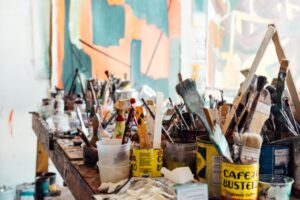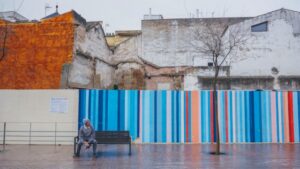From Canvas to Dissertation: How Fine Arts Students Tackle Academic Writing
When fine arts students switch from the fluidity of visual art to the organized needs of academic writing, they often face unique problems. Still, being good at academic writing is vital for artists because it helps them explain how they make art, think critically about their work, and place their practice in larger scholarly and cultural settings.
The Dual Nature of Fine Arts Dissertations
Fine arts dissertations typically embody a dual structure, intertwining practical artistic work with scholarly written analysis. The written component typically delves into the conceptual underpinnings, methodologies, and theoretical influences that inform the artistic practice. Such an integrated approach means that the dissertation presents a holistic view of the student’s artistic journey, bridging the gap between creation and critique.
Balancing creative practice with critical reflection and theoretical grounding is essential in fine arts research. Frameworks like practice-led research and artistic research emphasize the importance of this balance, advocating for a symbiotic relationship between making and thinking. These methodologies encourage artists to engage in a continuous dialogue between their creative processes and scholarly inquiry. For students seeking guidance in articulating this complex interplay, resources such as ghostwriting Österreich can effectively support structuring and expressing their academic narratives.
Common Challenges in Academic Writing for Art Students
Fine arts students often have trouble with academic writing, especially when they have to switch from visual expression to written analysis. Many people think that academic writing limits their ability to be creative, which can make them fight or feel disconnected from the writing process. This feeling comes up again and again when people talk about how hard it is for art students to get used to the structured nature of academic debate.
Speaking about visual ideas in written words is another big problem. Putting the subtleties of visual art into clear writing takes a set of skills that art schools might not stress. This issue can make it hard for artists to explain the meaning and background of their work in an academic setting.
Another problem is that students don’t have much experience with academic writing norms. A lot of art students might not know what is expected of them in academic writing, like how to properly cite sources and make a case with structure. This lack of knowledge can make it harder for them to write a coherent and well-researched dissertation.
Strategies for Integrating Artistic Practice with Scholarly Writing
To combine artistic practice with academic writing, you need to find ways to meet academic standards while still respecting the creative process.
Viewing Writing as an Extension of the Creative Process
Reframing writing as a creative work for fine arts students can effectively bridge the gap between studio work and academic analysis. Recognizing that both art and writing involve exploration, experimentation, and expression allows students to approach academic writing with the same creativity they apply to their art.
Engaging in Reflective Writing to Explore Artistic Decisions
Reflective writing enables students to examine their artistic choices, processes, and outcomes critically. By articulating the rationale behind their work, students deepen their understanding and communicate the significance of their art within a broader context. This practice enhances self-awareness and strengthens the analytical component of their dissertations.
Utilizing Visual Elements to Inform Written Analysis
Incorporating sketches, diagrams, and other visual materials into academic writing can enrich the analysis and provide clearer insights into the creative process. Visual elements serve as tangible references that support and illustrate the written narrative, making complex ideas more accessible.
Highlighting the Concept of “Embodied Writing”
“Embodied writing” emphasizes the connection between physical experience and textual expression. By engaging the senses and bodily awareness, students can produce writing that resonates with their art’s tactile and emotional aspects.
Practical Tips for Effective Academic Writing in Fine Arts
Effective academic writing in fine arts demands a blend of creativity and scholarly discipline. Students can begin with informal writing exercises, such as journaling or free-writing, to build confidence. This practice helps develop a personal voice and ease into more structured academic writing. For those seeking additional support in refining their writing skills, ghostwriting Österreich can offer guidance especially relevant to academic contexts.
It is essential to develop a clear thesis statement that encapsulates your artistic and analytical goals. This sentence serves as a roadmap, guiding the structure and argumentation of the dissertation. Asking friends and mentors for feedback can help you see things from different points of view, which can make your work clearer and more in-depth. Tennessee Tech University emphasizes the significance of maintaining consistent writing habits, advising students to write daily to stay on top of their workload and prevent stress during final exams.
Familiarity with citation styles and academic formatting is essential. Tennessee Tech University primarily uses APA 7th edition for theses and dissertations, and provides detailed guidelines on formatting, including font choices, margin settings, and page organization.
Time management plays a pivotal role in successful academic writing. Setting realistic goals and adhering to a structured timeline can help in managing the workload effectively.
Institutional Support and Resources
Offering specialized tools and programs, academic institutions play a key role in helping fine arts students improve their writing. Individualized help is available at writing centres to help students clearly express their creative ideas.
Mentorship programs pair students with workers with more experience to help them even more. For example, Montserrat College of Art’s tutoring program pairs students with professionals in the field who can help them with the ins and outs of academic writing and career advancement.
There is also a connection between artistic practice and academic writing that can be made through interdisciplinary courses. For example, the University of Washington Bothell has an Interdisciplinary Arts major that encourages students to find new ways to connect different art forms and academic fields.

